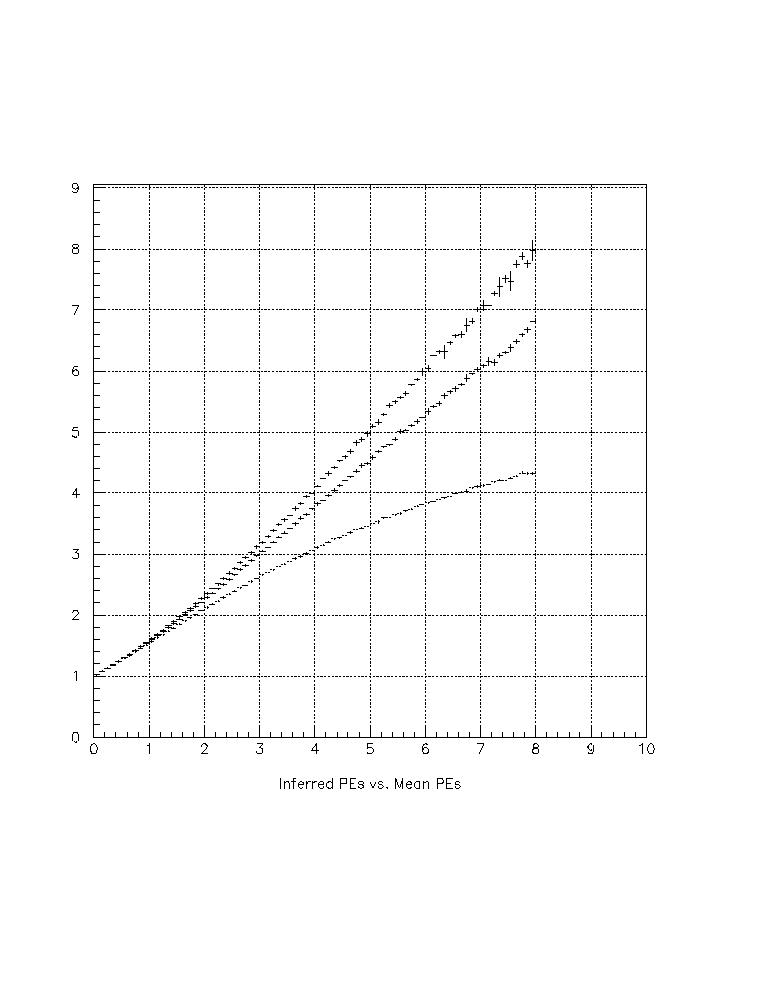
The laser calibration system uses the occupancy method to determine the TOT to PE conversions. In the typical application of this method the illumination of the PMT is either constant or measured shot-to-shot. In Milagrito we do not measure the shot-to-shot variation in the laser intensity. Here I investigate the effect of fluctuations in the laser intensity on our TOT-PE calibration.
A Quick Review of The Occupancy Method:
For a constant output light source there is a well defined mean light level that reaches the PMT. Since this mean number of photons is small the actual number that arrive at the PMT fluctuates according a Poisson distribution.
P(N) = exp(-mu) mu^N/N!
Then the "occupancy (OCC)" is (# times N>= 1)/(# times N>= 0).
Thus: OCC = 1. - exp(-mu) or mu = -ln(1-OCC)
We can then derive <pes>= <N>:
<N>= SUM_1^inf {N P(N)} / SUM_1^inf { P(N) }
= mu/OCC
or
<pes>= -ln(1 - OCC)/OCC
In the limit that OCC->0 <pes>->1.
The effect of Variable mu:
While all of this makes sense if mu is stable, the above equations become
poorly defined if mu is variable (shot-to-shot fluctuations in the light
output). To investigate the effect of this I wrote a simple Monte
Carlo.
Figure 1 shows <pes>vs. mu. The upper line is for no fluctuations in the laser (sigma = 0.), the middle line is for sigma = 0.2 and the bottom line for sigma = 0.4. Note that symmetric fluctuations mimic saturation.
Figure 2 shows measured mu vs. the true mu, where the measured mu is obtained from mu = -ln(1 - OCC). The lower line is for sigma = 0., the middle for sigma = 0.2, and the upper curve for sigma = 0.4.
Figure 3 gives the fractional error introduced by the laser fluctuations as a function of the mean illumination of the PMT.
Conclusions:
At low light levels the occupancy method is immune to fluctuations in
the laser output. This is because a large relative change in occupancy
has no effect on the measured <pes> if the occupancy is small.
At present we use the occupancy method between 1 and 3 PEs. If the fluctuations
in the laser output are ~20% we can safely ignore them (~5% error).
However, if they are large, 40%, we will have a 20% error in our calibration
at 3 PE. We can make plots similar to Figures 1 and 2 with our laser data
and infer the laser fluctuations. But we should also look at a PMT with
the ADC at a fixed filter wheel position and directly measure the fluctuations.
If they are large we must instrument the calibration system with a method
of measuring the shot-to-shot variations in the laser output.